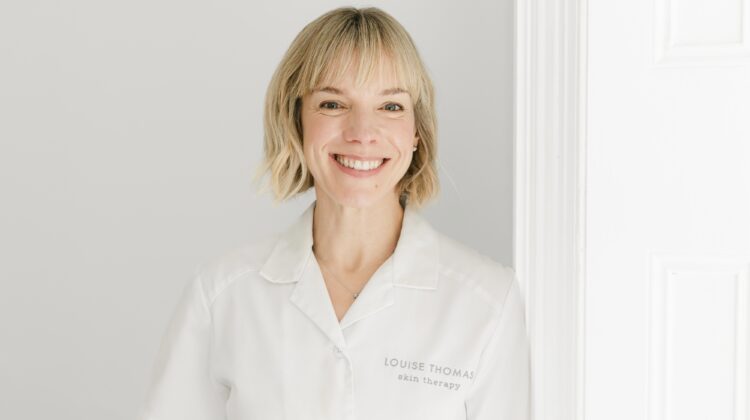
This month, skin health expert Louise Thomas-Minns looks at the science behind her 20-year strong skincare philosophy – and reveals the three ingredients you need to reset and restore that all-important lipid barrier
Twenty years ago, a philosophy and formula for treating skin was born. Our ‘trinity symbol’ representing our 3D approach to nurturing the skin back to health. The philosophy came from me having chronic acne, and having grown an extensive, advanced knowledge in the advanced anatomy and physiology of the skin. Practicing this 3D approach on myself I began to realise that it wasn’t just what I applied topically that would lead to the healing and improvement to skin disorders and overall skin health.
Our ‘trinity symbol’ evolved to show how these three pillars of science, nutrition and holistic practices, illustrated by the three interlocking ovals with the dot in the middle representing you as the individual.
This month I am going to break down the first element of this symbol: science – the science of you and of your skin’s anatomy and physiology. How we can get your skin functioning better for itself; how we are led as a brand by science in the ingredients we use in our skin care; and the technology we use in our signature facial treatments, preferring to come from a place of evidence rather than marketing hype.
One of the key elements we talk about all the time to our clients and customers is the important role the lipid barrier plays in the skin.
So, what is the lipid barrier?
The outer layer of cells of the epidermis help to form a protective layer between you and external elements. Think of this skin cellular barrier as a brick wall. The lipid barrier comprises a blend of fatty acids, ceramides, and other nutrients and is called the Natural Moisturising Factor (NMF). It is like a “cement” between your skin’s cells, or “bricks.”
Why is this lipid barrier important?
The lipid barrier helps protect the skin by keeping water in and pollutants out.
A healthy skin barrier takes on these three essential jobs:
- It helps protect your body from external stressors (like pollution and UV radiation)
- It retains water, which helps keep your skin hydrated
- It transports nutrients to your skin
When lipid barrier is intact, it will prevent trans epidermal water loss (termed dehydration) and keeps out external aggressors like UV radiation, heat, cold, and environmental irritants. When your lipid barrier is compromised, it’s unable to effectively perform these tasks.
One way you can tell if you have lipid barrier issues is dehydration – that feeling of your skin being ‘tight’, meaning you can’t wait to apply your moisturiser. This can result in symptoms like redness, itching, and flaky skin. Your skin may also become more reactive, and may feel especially sensitive to heat, cold, dry air, or certain skin care products. Lipid barrier health is the first thing we will look at and address before we embark on a programme of skin treatments.
The three ingredients you need to reset and restore your barrier function (all are found in our unique hydrating complex across our skin care range):
Glycerine – A humectant and moisturiser. It holds onto water and prevents trans-epidermal water loss (or dehydration – that tight feeling you can feel on your skin)
Sodium hyaluronate – This is part of hyaluronic acid BUT it has a much smaller molecular weight which means it can penetrate the epidermis and assist with hydrating the layer of skin below. It’s a humectant and acts like a moisture magnet.
A plant derived polysaccharide – A moisturising and skin soothing ingredient. It works by binding water to the epidermis and creating a moisture-binding film on the skin that gives a soft, smooth feeling. In addition to providing long lasting moisturisation, it also functions as an anti-irritant.
(Copyright Louise Thomas-Minns)
Visit Louise Thomas Skin Care.
Featured image of Louise Thomas-Minns by storiesbychloe.com









Leave a Reply